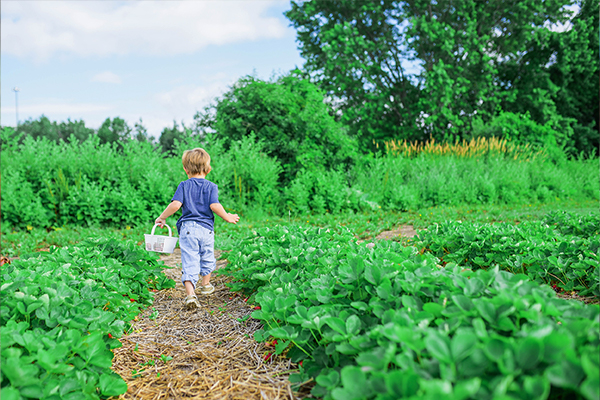New Years Resolutions for Making a Positive Impact

Finally, 2020 is over. For many, myself included, it was a rough year, and everyone was looking forward to New Year’s to celebrate the end of a year that made history.
For me, New Year’s has always been the time to be reflective about the year past. In 2020 I started writing for Planet Home, and since then, how I view the world and my role in it has changed. Now, I look at it through an action lens: what can I do to help?
I’ve never been big on resolutions, but more on setting goals for throughout the year that are actually reachable. It’s the start of a new decade though, and after the stagnant year of 2020, it’s the perfect time to change habits and find new practices. So, here are my goals for this year, and years to come.

Emission Reduction
Increasing emissions are the backbone behind the greenhouse effect and changing atmospheric conditions. Emissions are increasing for various reasons, including increasing levels of shipping, the burning of fossil fuels in energy production, and even agriculture. Luckily, we can help.
Using Public Transport
Transportation makes up 28% of greenhouse emissions in the United States, an increase from 1990. I’ll be moving to Washington, D.C. later this year for graduate school, and while I’ll have a car, my goal is to use public transport (or carpooling) more than driving. Not only will my levels of emissions decrease with clean tranport, but it can also help decrease traffic and idling. It’ll save money, too.
Using Greener Technology
At home, we currently use solar-powered motion-sensor lights off of our back porch for our dog at night. Solar-power not only reduces emissions but also decreases water pollution because it uses a lot less water than other energy sources. This year, I hope to change more of our outside lights to solar-power and find an apartment building that uses solar when I move. I’m also going to be smart with my current technology, such as recycling technology, replacing items only when necessary, and using Ecosia as my search engine, which plants trees with every search.

Line-Dry Clothing
Dryers, while convenient, also use a lot of energy; line-drying can reduce a household carbon footprint by over 2000 pounds if you line-dry year around. It also gets you exercise, prevents fires, and saves money. I do about one load of laundry a week, and my parents do about three. So, when the warmer months come around here in New England, I plan on line-drying whenever possible.
Buying Sustainable Fashion
Fashion is a wonderful tool to express ourselves, but fast fashion is harmful for the environment. The fashion industry alone accounts for 10% of carbon emissions globally, 35% of microplastic pollution (mostly in the ocean), and consumes more water than all but one industry. None of that takes shipping into account, either. To help combat this, I’m only buying clothes I know will last and that I know I will wear often. I’ll also be buying second-hand as often as possible, and shopping from sustainable brands whenever possible.
Supporting Local Farms
Local businesses need our support more now than ever as the COVID-19 pandemic runs rampant, and its been shown that buying local produce leads to twice the amount of money staying in the community. It’s also healthier, with less preservatives, fresher (meaning more nutrients), and releases less carbon. Additionally, there’s a lot of ways to support local.
Join a CSA
Community Supported Agriculture programs work like gift cards: you put a certain amount of money on, and many farms give you back some. So, if you put $500 in, your gift card may have $550 on it, depending on the farm and their rates. You might get a discount, too. I will be getting a CSA this season, to support my former workplace and eat healthier.
Buying/Picking in Bulk
Many fruits freeze well for smoothies and baking, so buying and picking in bulk will help you and the farm, by increasing their revenue. Additionally, frozen vegetables work well for soups and sauces. This season, my goal is to pick in bulk, and then prepare all the produce for freezing. Since another goal of mine is to cook more, it’ll work well for trying new recipes.
Eating and Shopping Local
A lot of restaurants use local goods in their menus; instead of hitting up a fast-food joint, a large goal of mine is to try more local restaurants. Additionally, just buying more local goods at supermarkets and small businesses. I know I can find local baked goods, local clothing, and local art all around me, and I want to support them as much as possible. As a bonus, it’ll help decrease emissions and encourage local growth.
Eating Greener
Eating green means many things, and can look different for everyone. At the basis, it’s just eating food that is more ethically sourced, to help the environment and our communities.
Supporting Local
Supporting locals is one of the easiest ways to eat more green. Not only are the produce healthier, but it’s also better for the planet: usually, there’s no preservatives, less carbon emissions, and less waste.

Eating Less Beef
I’m not the biggest meat fan there is, but I’m also a very picky eater, so it tends to be my main source of protein. Even though I already don’t eat a lot of it, I want to eat less beef this upcoming year to help my health. My family has a history of heart problems, and I want to avoid that as much as I can. Red meat is a major contributor to poor heart health, increased cancer risk, and diabetes. The production of red meat also uses about 70% of our clean water, meaning not only will it help my health, but also help the planet.
Already, I’ve started trying different protein bars, exploring new recipes with chicken, and preparing myself to try BeyondMeat. I’m also trying to convince my parents to try jackfruit, such as in a pulled-pork-type recipe.
Eating Plant-Based Meat
Going vegan is a goal that is years away for me, but I have always been intrigued by the plant-based meat. One problem, though: I can’t eat gluten, and a lot of the plant-based meat products I can find contain gluten. Like I mentioned earlier, I’m also picky, but I know plant-based meat is beneficial for not only our health but also the planet, so another one of my goals is to explore more plant-based meat options.
At the end of the day, resolutions or goals will be different for everyone based on health, accessibility, and budget. However, if we all embrace some changes, we can all make a difference. These are just my goals for this year, but I’d love for you to do them with me, or make your own list.


Leave a Reply